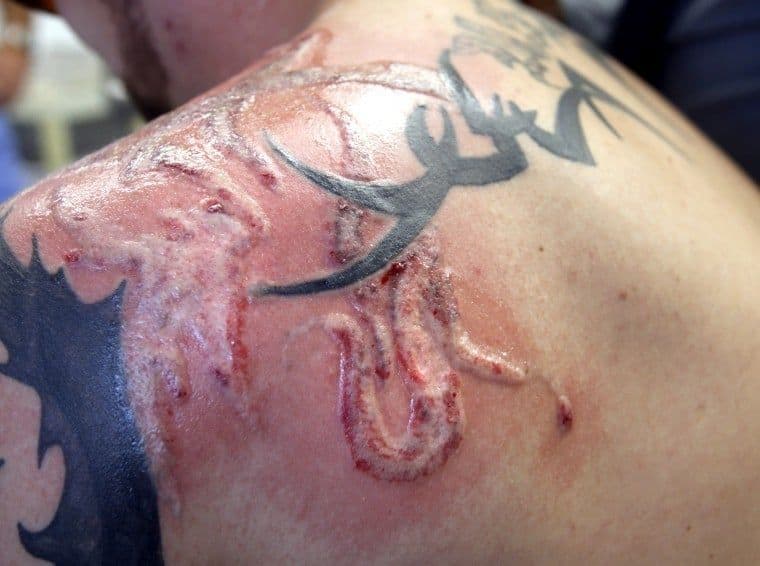
Understanding the Signs of Injury After Laser Tattoo Removal
Laser tattoo removal is a widely used procedure that helps individuals eliminate unwanted tattoos through high-intensity light beams. While it's considered safe and effective when performed correctly, it's not without potential side effects. Understanding the signs of injury after undergoing laser tattoo removal is essential for recognizing complications early and ensuring proper care during the healing process.
Initial Redness and Swelling:
Redness and swelling are among the most common Signs of injury after laser tattoo removal (علامات الإصابة بعد إزالة الوشم بالليزر). These effects are a normal part of the body's inflammatory response and typically subside within a few hours to a few days. The treated area may appear sunburned and feel warm to the touch. However, if the redness becomes more intense over time or is accompanied by increasing pain, it may be a sign of irritation or an early infection. While mild inflammation is to be expected, prolonged or worsening swelling may suggest that the skin has been overexposed to laser energy. In such cases, it's crucial to monitor the area closely and avoid scratching or rubbing the skin, which could lead to further damage.
Blistering and Scabbing:
Blisters can form within the first 8 to 24 hours after a treatment session. Though they may look concerning, blistering is a common side effect and part of the healing process. These fluid-filled bumps protect the skin and underlying tissue as the body works to repair itself. It's important not to pop or pick at them, as doing so can introduce bacteria and increase the risk of scarring. Scabs may follow blistering and serve as a protective barrier for new skin cells. Proper care—such as keeping the area clean, moisturized, and covered—can support the natural healing process. However, excessive scabbing, especially if it is thick, discolored, or painful, could indicate tissue trauma or an underlying issue that needs attention.
Hyperpigmentation and Hypopigmentation:
Changes in skin pigmentation are a frequent concern after laser tattoo removal. Hyperpigmentation refers to darkened skin patches that may appear where the tattoo was treated, while hypopigmentation results in lighter patches. These changes are usually temporary and tend to fade over several weeks or months.
Skin Texture Changes and Scarring:
Injuries from laser tattoo removal can sometimes lead to changes in skin texture. Treated areas may feel rough, bumpy, or hardened. In more severe cases, the skin might become indented or raised, suggesting the beginning of scar tissue formation. While minor textural changes are common and often temporary, persistent alterations can be a sign of deeper dermal injury. Scarring is relatively rare with modern laser technology but can occur, particularly if the skin is not properly cared for post-treatment. Aggressive treatment settings, repeated trauma to the same area, or improper wound care—such as scratching or infection—can all contribute to permanent scarring.
Itching and Burning Sensations:
Mild itching and tingling sensations are normal signs that the skin is healing. However, intense or prolonged itching accompanied by burning pain may indicate an allergic reaction or a deeper inflammatory response. These symptoms should be observed carefully, especially if they come with hives, peeling, or warmth in the area. Severe burning sensations after the first 48 hours are not typical and may suggest nerve involvement or tissue damage. This can occur if the skin was treated too aggressively or if the individual has a sensitivity to light-based therapies. Applying a cool compress and avoiding irritants can help soothe the area, but if discomfort persists, it may require further evaluation.
Infection Indicators:
One of the most critical signs of injury following laser tattoo removal is infection. Warning signs include persistent redness, warmth, pus or cloudy fluid, foul odor, and increasing pain. The area may also become hot to the touch or show red streaks extending from the treatment site—symptoms that should never be ignored. Infections can occur when bacteria enter through broken skin or blisters, especially if the area is not kept clean or is exposed to contaminated surfaces. Prompt recognition and care are essential in preventing more serious complications. Using clean dressings, practicing good hygiene, and avoiding submersion in water (like swimming pools or hot tubs) during the healing period can reduce the risk.
Delayed Healing and Chronic Discomfort:
Most people heal within one to two weeks after a laser tattoo removal session, though deeper or larger tattoos may take longer. If the treated skin shows no improvement after this period—or if symptoms worsen—there may be an underlying issue such as skin sensitivity, immune response, or improper aftercare. Chronic discomfort like aching, stinging, or numbness that persists beyond the normal healing window could indicate deeper tissue involvement or nerve irritation. Such symptoms should not be dismissed, as they may signal complications that need further intervention or a reassessment of the laser settings used in the procedure.
Final Thoughts:
Understanding the signs of injury after laser tattoo removal empowers individuals to differentiate between normal healing responses and potential complications. While mild discomfort and temporary changes are part of the recovery process, persistent, worsening, or unusual symptoms warrant attention. Proper aftercare—including keeping the area clean, avoiding sun exposure, and allowing the skin to heal naturally—is essential in minimizing risks and ensuring optimal results. By staying informed and vigilant, you can navigate the healing journey safely and effectively.
Read more about
Appreciate the creator